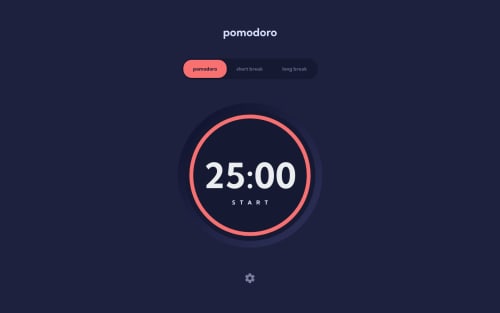Pomodoro App with React & Tailwind

Solution retrospective
Difficulty in Implementing Custom Timer Logic
One of the main challenges I faced was implementing the custom timer logic for the Pomodoro, short break, and long break intervals. Specifically, ensuring that the timer transitions smoothly between different modes while updating the circular progress bar accurately. I'd appreciate feedback on how others have approached similar challenges and any tips for optimizing this part of the code.
State Management with Zustand
While Zustand provided a simpler alternative to other state management libraries, I'm curious to know if there are any specific best practices when using Zustand in a React project, especially when managing timers and user settings. Are there any common pitfalls or performance considerations I should be aware of?
Styling Consistency with Tailwind CSS
Tailwind CSS greatly facilitated the styling process, but I'm unsure if I've fully leveraged its utility-first approach. I want feedback on how I can improve the consistency and efficiency of my styling and whether there are any Tailwind CSS techniques or practices I might have overlooked.
I look forward to your insights, and thank you in advance for your valuable feedback!
Please log in to post a comment
Log in with GitHubCommunity feedback
No feedback yet. Be the first to give feedback on David Inoa's solution.
Join our Discord community
Join thousands of Frontend Mentor community members taking the challenges, sharing resources, helping each other, and chatting about all things front-end!
Join our Discord